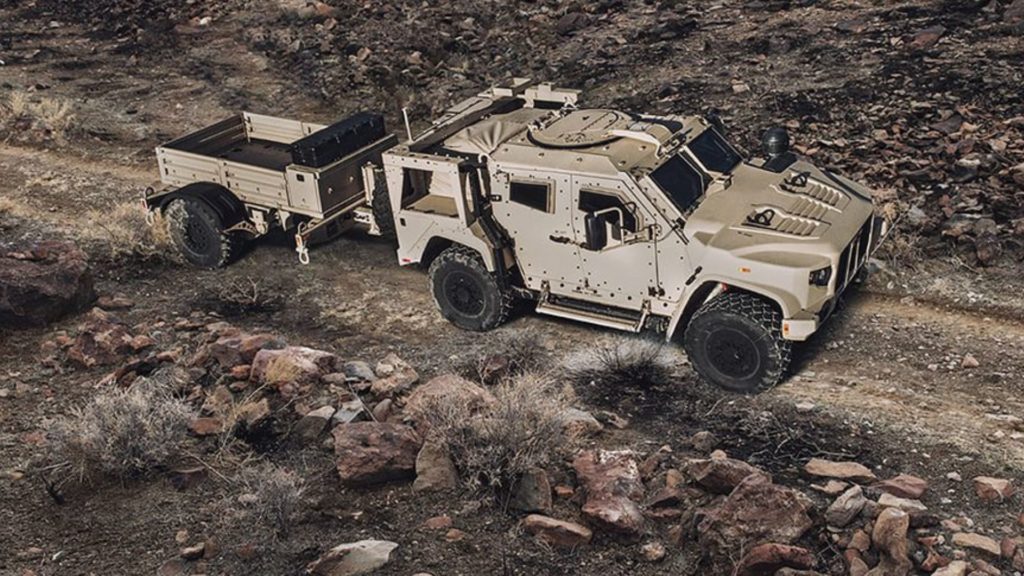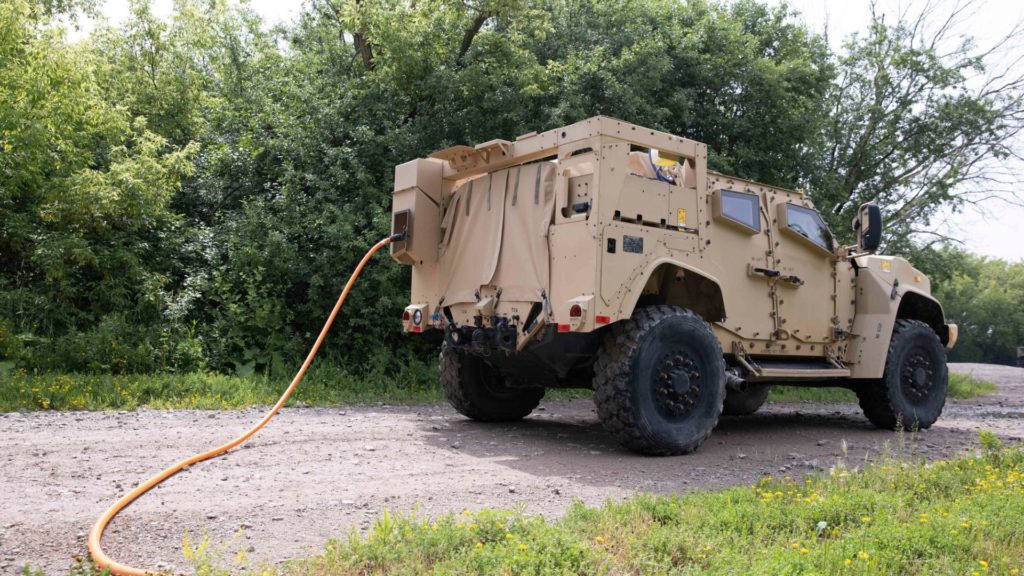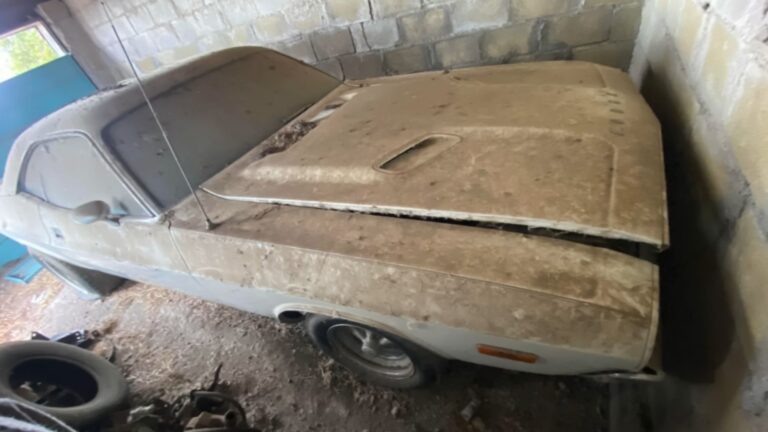
Image via Oshkosh Defense
Oshkosh Defense, a brand owned by American company Oshkosh Corporation, produces the Joint Light Tactical Vehicle (JLTV) for the US Military, at least for now. While some have thought the vehicle would fully replace the Humvee made by AM General, as was originally announced, the JLTV has been somewhat controversial and only been used for a partial replacement thus far. There are several reasons for this altered plan.
Learn more about the versatility of the BearCat lineup.
The JLTV was designed not only to take direct fire and shelter soldiers from improvised explosive devices, but also to boost overall mobility and payload capacity versus the Humvee and other High Mobility Multipurpose Wheel Vehicle platforms being used in Iraq and Afghanistan. They also offer more battlefield connectivity options, an essential component in an increasingly technological fighting force.

Among the designs which safeguard soldiers as they move around a battlefield is an automatic fire protection system, blast-protected seats, and a scalable protection system which can be installed and removed in the field for greater flexibility. The chassis is also designed to take IED blasts, something that plagued Humvees in the US’ two most recent wars.
On the mobility side, the JLTV is touted as superior in rough terrain versus the Humvee. While much has been said about the off-road capabilities of the JLTV, it also can navigate tight urban terrain, something that’s critical since not all missions take place out away from cities.

One of the keys to the JLTV’s success in maneuverability both out on the field and in urban environments is the patented TAK-4 independent suspension design. Oshkosh says it features 20 inches of suspension travel, has a self-leveling function for when vehicles are parked on a steep slope, and is hardened against land mines and IEDs so the vehicle doesn’t become disabled after surviving such a blast.
Plus, the JLTV can not only be loaded in a plane and on boats but can also be airlifted by certain helicopters. That flexibility is necessary since it was designed to be used by the US Army, Air Force, and Marines.
It’s also said the JLTV is more fuel efficient and reliable than Mine Resistant Ambush Protected All-Terrain Vehicles or MRAPs and can traverse more difficult terrain with ease. That’s not too hard to believe, plus they’re more maneuverable than those larger trucks. It’s claimed by Oshkosh that the JLTV can go 70% faster in off-road environments versus competing platforms.

However, critics of the JLTV have said it’s riddled with bugs and is far too easily detected on the battlefield, both through sound and other means of discovery. A military report even said the vehicle negatively affects “crew situational awareness.” Despite all those alleged flaws, some say the JLTV is still an effective modern fighting vehicle, defending it for future use. In other words, it’s controversial. But as many have pointed out, Humvees certainly aren’t without their faults, especially as the nature of warfare evolves.
There are four variants of the JLTV: General Purpose (GP), Heavy Guns Carrier (HGC), Utility (UTL), and Close Combat Weapons Carrier (CCWC). The GP is used primarily for transporting troops. With the HGC, both manned and remote-operated weapons can be mounted on the roof, making it perfect for a convoy escort, over-watch and direct fire support for infantry, or security missions. There’s even an option to mount laser weapons for combatting UAV swarms.
The UTL is made for transporting cargo or shelters. It looks like a heavily armored pickup. The CCWC on the other hand replaces the tail end with a rectangular box-like structure to protect its payload entirely.

Oshkosh also makes a hybrid-electric JLTV which is designed not only to sip fuel but add a few more utilitarian advantages. Called the eJLTV, it has a battery-only silent drive mode which understandably could present a tactical advantage. There’s also a silent-watch feature. Both not only reduce operational noise but also heat signatures, addressing concerns the JLTV is too easy to detect on the battlefield. Plus, soldiers can use the vehicle as a generator to power other devices, eliminating the need for towing a generator.
Pretty much everyone heard about the JLTV when Oshkosh Defense won a $6.7 billion contract with the US Armed Forces back in 2015. That caused a big shakeup in the military vehicle market, but everything hasn’t gone off without a hitch. However, in 2021 Oshkosh was given a $591 million contract for making JLTVs and trailers for the US Military and in December 2022 it signed an agreement for $543 million to make JLTVs for joint US forces.

Things took a turn in February 2023 when the military decided to award a $9.7 billion JLTV contract to AM General. Oshkosh protested the move, but that was rejected, so the company will cease production of JLTVs for the US at the end of 2024. Israel has put in an order with Oshkosh which will keep its production line churning out more JLTVs into 2025, although the future for Oshkosh’s production facility remains unclear.
Other militaries, mostly EU and NATO members as well as Israel and Brazil, have purchased JLTVs from Oshkosh Defense. It remains to be seen if any of those countries will switch to AM General for 2025.
It’s strange to realize the JLTV is the spiritual successor to the jeep, which emerged for WWII. Those two light transports look vastly different, showing how warfare has changed over the last 80-plus years.
Images via Oshkosh Defense




6 thoughts on “Paving The Way For Future Warfare: Oshkosh JLTV”